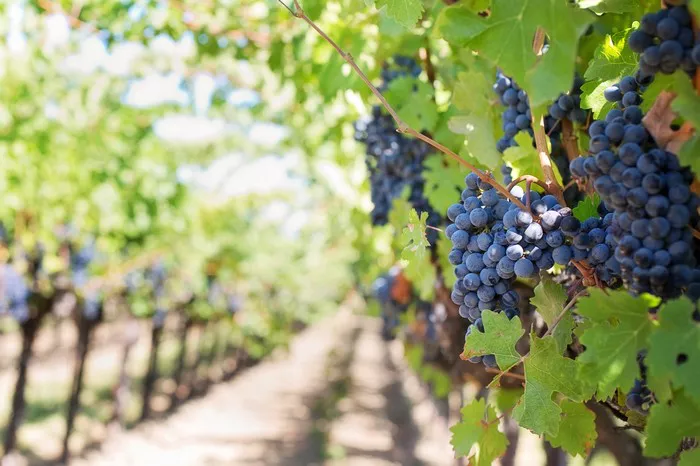Sancerre Blanc, the crisp, elegant white wine hailing from the Loire Valley of France, has captivated wine enthusiasts worldwide with its distinctive flavors and unparalleled quality. However, behind its renowned reputation lies a mystery that often piques curiosity: What grape is used in the making of Sancerre Blanc? Delving into the heart of this enigma unveils a fascinating journey through history, terroir, and viticulture, shedding light on the grape variety that imparts Sancerre Blanc with its unique character and charm.
Exploring the Terroir of Sancerre: A Home for Sauvignon Blanc
To understand the grape behind Sancerre Blanc, one must first appreciate the terroir that nurtures it. Sancerre is nestled in the eastern part of the Loire Valley, where rolling hills and limestone-rich soils create an optimal environment for grape cultivation. It is here that the renowned Sauvignon Blanc grape finds its true expression.
Sauvignon Blanc, often hailed as one of the world’s most celebrated white wine grape varieties, thrives in cool-climate regions like Sancerre. The region’s unique terroir, characterized by its chalky limestone soils and maritime influence from the nearby Loire River, provides the ideal conditions for Sauvignon Blanc to flourish. The grape’s affinity for these soils, combined with the region’s cool temperatures and ample sunshine, results in wines that boast vibrant acidity, distinctive minerality, and complex aromatic profiles.
Sauvignon Blanc: The Heart and Soul of Sancerre Blanc
At the core of Sancerre Blanc lies the essence of Sauvignon Blanc. Renowned for its aromatic intensity and crisp acidity, Sauvignon Blanc is the primary grape variety used in the production of Sancerre Blanc wines. This noble grape brings a spectrum of flavors and aromas to the glass, ranging from zesty citrus and tropical fruits to herbaceous notes of freshly cut grass and elderflower.
In Sancerre, winemakers harness the inherent qualities of Sauvignon Blanc to craft wines that reflect the region’s unique terroir. Through meticulous vineyard management and precise winemaking techniques, they aim to preserve the grape’s natural freshness and purity while showcasing the distinct characteristics of Sancerre’s soils and microclimates.
The Influence of Terroir on Sancerre Blanc
While Sauvignon Blanc serves as the cornerstone of Sancerre Blanc, the region’s diverse terroir plays a crucial role in shaping the wine’s flavor profile and complexity. Within the Sancerre appellation, vineyards are scattered across three distinct soil types: limestone, clay, and flint.
Each soil type imparts its own signature traits to the wines produced within its domain. Limestone soils, prevalent in the western part of the appellation, contribute to wines with vibrant acidity and pronounced minerality. Clay soils, found in the central and eastern areas, tend to yield wines with greater richness and texture. Flint soils, scattered throughout the region, impart a distinctive flinty, smoky character to the wines, often described as “gunflint” or “flintstone.”
By carefully selecting vineyard sites and managing vineyard practices accordingly, winemakers can harness the unique characteristics of each soil type to create Sancerre Blanc wines of exceptional quality and complexity. The interplay between soil, climate, and grape variety ensures that each bottle of Sancerre Blanc reflects its terroir in a truly expressive manner.
Winemaking Techniques: Bringing Sancerre Blanc to Life
In addition to the grape variety and terroir, winemaking techniques play a vital role in shaping the final expression of Sancerre Blanc. From vineyard management to fermentation and aging, every step of the winemaking process influences the wine’s aroma, flavor, and texture.
Harvest timing is a critical decision for Sancerre winemakers, as it directly impacts the grape’s acidity, sugar levels, and flavor development. Most Sancerre Blanc producers opt for early harvests to preserve the grape’s natural acidity and freshness, ensuring that the resulting wines exhibit lively fruit flavors and crisp acidity.
Upon harvest, the grapes are gently pressed to extract their juice, which undergoes fermentation under controlled temperatures. Many winemakers choose to ferment Sancerre Blanc in stainless steel tanks to preserve its vibrant fruit character and crisp acidity, while others opt for oak barrels to impart additional complexity and texture to the wine.
Following fermentation, Sancerre Blanc wines may undergo aging on lees, a process that involves leaving the wine in contact with spent yeast cells. This technique enhances the wine’s mouthfeel and complexity, adding layers of texture and flavor to the finished product.
The Diversity of Sancerre Blanc: From Traditional to Modern Expressions
While Sauvignon Blanc is the undisputed star of Sancerre Blanc, the region’s winemakers embrace a diversity of styles and approaches to winemaking, resulting in a wide range of expressions to suit every palate.
Traditional Sancerre Blanc wines are characterized by their purity of fruit, crisp acidity, and mineral-driven complexity. These wines often undergo minimal intervention in the winery, allowing the grape’s natural flavors and aromas to shine through.
In recent years, however, a new generation of winemakers has emerged, pushing the boundaries of Sancerre Blanc production with innovative techniques and stylistic interpretations. From extended skin contact to barrel fermentation and aging in amphorae, these avant-garde winemakers are redefining what Sancerre Blanc can be, crafting wines that are rich, textured, and full of personality.
Conclusion: Unraveling the Mystery of Sancerre Blanc
In conclusion, the answer to the age-old question, “What grape is used in the making of Sancerre Blanc?” is unequivocally Sauvignon Blanc. However, the true magic of Sancerre Blanc lies not only in its grape variety but also in the region’s unique terroir and the skillful hands of its winemakers. Through a harmonious marriage of grape, soil, and climate, Sancerre Blanc wines capture the essence of the Loire Valley, delivering elegance, complexity, and sheer pleasure with every sip. Whether enjoyed as a crisp aperitif or paired with a gourmet meal, Sancerre Blanc continues to enchant and delight wine lovers around the globe, cementing its place as one of the world’s most cherished white wines.


